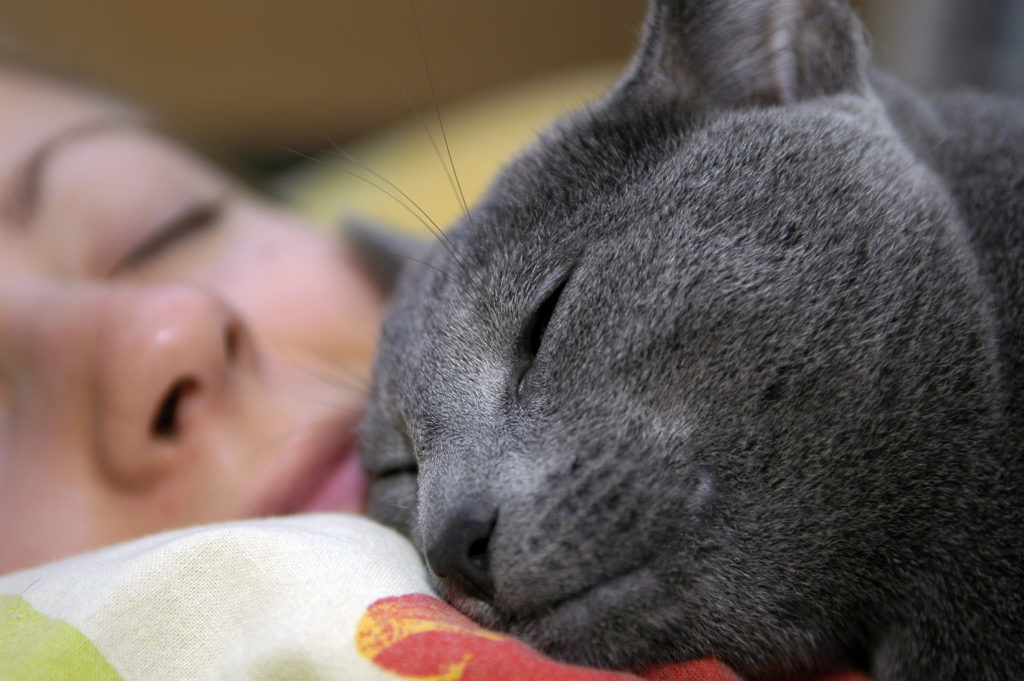Are you allergic to cats but love the creatures? That means you either have one living with you and suffer through the symptoms (it was congestion and headaches for me with my cat, Willie) or you have resigned yourself to no feline company. Maybe this describes you – you are not allergic yourself, but your child, spouse, or significant other is, and you’d really like to sneak a cat in but know that you’d probably be thrown out at night along with the cat. So, no kitty at home. And that makes you sad. But there is some hope!
In the episode of the Raising Your Paws podcast you can hear below, my guest conversation was with Diane Morgan, the author of “The Sneeze Free Cat: Allergy Management and Breed Selection for the Allergic Cat Lover.” who I originally interviewed for my past Wild About Pets radio show. In this replay of that interview, she will tell you how to treat your allergies with medicines and in ways you may not know about, how to allergen proof your home and we talk about some of the breeds that seem to produce less allergy symptoms in people – the so called “hypoallergenic cats.” Is this true? Are there really cats that are guaranteed to not make a person sneeze, drip and cough all over the place? The answer is not really. In the podcast, I promised you that you would see photos of some of the cat breeds we were talking about that do seem to produce less allergy symptoms in some people. You will find them below.
The way the Wild About Pets Radio show, worked was, photos that illustrated the conversation were streamed in real time and seen by watching a player window on a computer while listening to the show. The photos you see on this blog are the exact ones from that original conversation.
Before I get into the breeds you may want to consider, here is a handy tip that Diane shared about something you can do with your cat, to help reduce your allergic reactions to them.

Yep, give it a bath.
Your cat might not like it so much when you first start the practice, but I hear they get used to it. Until then, I’m sure you’ll get better at quickly dodging their scratching claws of discontent. Hey, what’s a few scratches, when there is the chance that being around kitty won’t make you or a family member feel as miserable? Why would you willingly plop a creature that most mostly hates water into a tub, you ask? It has to do with what it is about the lovely feline that is making you blow your nose a million times a day.
You see, the nasty little buggers that cause the allergic reaction is not your cat’s fur, or dander (dead skin cells) or saliva as you may have heard.
 The allergen is a very, very, tiny, sticky protein substance, named, Fel d 1, which is in the secretions produced by your cat’s sebaceous glands in their skin. These oily secretions protect and lubricate a feline’s skin and hair. When kitty licks itself with its tongue while grooming, it spreads that oil (along with the allergens) all over its body onto the fur, where it dries and then flakes off.
The allergen is a very, very, tiny, sticky protein substance, named, Fel d 1, which is in the secretions produced by your cat’s sebaceous glands in their skin. These oily secretions protect and lubricate a feline’s skin and hair. When kitty licks itself with its tongue while grooming, it spreads that oil (along with the allergens) all over its body onto the fur, where it dries and then flakes off.
Because the allergens are very light in weight, they float up into the air and then you breathe them into your lungs. Ahhchoo! Then, those sticky allergens attach themselves to the cat’s hair which of course falls off from the cat, and gets all over the furniture, your clothes and sometimes find their way into your mouth and food as all cat owners have experienced on occasion. I was always pulling those fine, down-like little Willie hairs from out of my eyes that felt just like eyelashes stuck in the eyes. Does this happen to you? Cats are unique in that they produce this specific protein that other animals, like dogs, do not. And cat allergies are twice as common as dog allergies.
Anyway, by establishing regular bath time for Sir or Madame kitty, you can wash some of those allergens on their skin down the drain.
Speaking of their skin, this is a perfect time to show you the photos of 6 breeds that tend to be somewhat less problematic starting with the most famous of the “hypoallergenic” breeds of cat. This one has alot of skin in the game. The Hairless Sphynx. This cat does not have hair.

Hairless Sphynx Cat.
This cat produces the same allergens that other cats do, but with no hair transport system, the protein doesn’t float away into the air, but stays on the body. You will want to wipe down this type of cat, though fairly frequently, to reduce your exposure to the natural secretions on their skin, and when petting them, you may find that they feel rather greasy, so have cloths handy.
The “Rex” cats.

Cornish Rex Cat.

Devon Rex Cat.
These Cornish and Devon Rex cats have curly or wavy coats, and don’t tend to shed as much so there is not as much allergens floating around.

Balinese Cat.

Javanese Cat.
These cats have longer, silky coats and don’t seem to produce as much of the allergens.

Oriental Short Hair Cat

The Oriental Short Hair cat’s coat comes in hundreds of colors and is found to be less likely to cause allergic reactions.
A helpful bit of advice that Diane Morgen shared is that a person can be allergic to one cat but not another living in the same household and may still be allergic to one of these specific hypoallergenic breeds so the best thing to do before adopting or getting a cat from a breeder is to spend time around the cat and monitor your reactions.
Cats and cat allergies CAN co-exist. If you haven’t yet listened to all the great suggestions for how it can be done, in the podcast episode, I know it will be worth your time. Go to segment 2 – timestamp, 03:49.




0 Comments